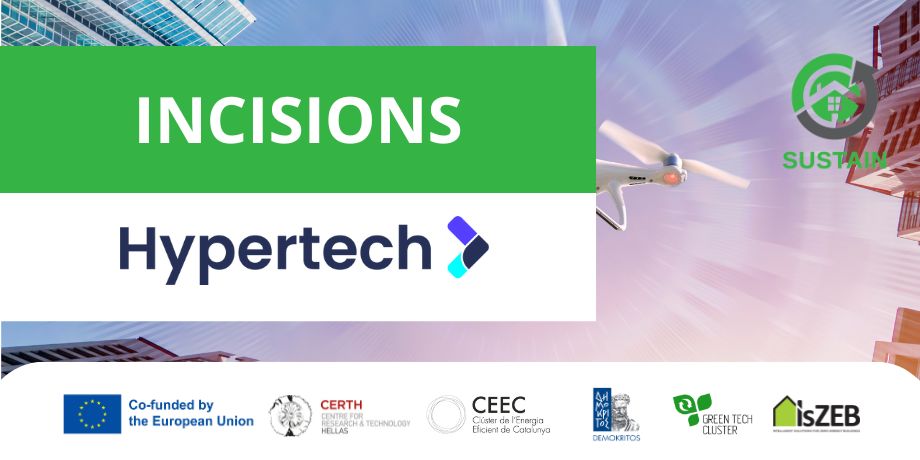From Drones to Data: INCISIONS experiment

Led by Hypertech, the INCISIONS experiment is transforming the way energy potential is estimated in the building sector by leveraging drone aerial survey technology and advanced data mining techniques. Recognized as one of the winners of the first Sustain EuroCluster Open Call, INCISIONS is pioneering a cutting-edge solution to assess building energy characteristics efficiently and accurately. The project addresses the challenge of estimating energy potential and optimizing the Smart Readiness Indicator (SRI) score of buildings by utilizing drones to conduct aerial surveys of building assets, collecting thermal images and heat dissipation maps. These data points are analyzed using state-of-the-art technologies such as computer vision and deep learning to identify energy characteristics, including openings, heat losses, and renewable energy assets like photovoltaic (PV) panels.
The core objective of INCISIONS is to provide a streamlined, non-intrusive approach for calculating the SRI score. This is achieved by estimating energy potential through drone technology, which captures aerial surveys and generates 3D models of buildings. Recorded thermal data is linked to the SRI computation engine to evaluate building energy performance, while findings are visualized in an interactive web map and a VR application that allows virtual walkthroughs with annotated insights. The experiment integrates advanced computer vision algorithms to construct 3D building models and applies deep learning to extract detailed insights from thermal images. This innovative approach significantly reduces the time, cost, and complexity traditionally associated with assessing a building’s energy footprint.
By addressing critical SRI criteria such as energy efficiency, automation, and the integration of renewable energy sources, INCISIONS empowers building owners, occupants, and energy experts to make informed decisions. As the project advances, its potential to revolutionize building management practices across Europe becomes evident. The experiment not only aligns with EU climate objectives but also sets a precedent for the widespread adoption of smart, sustainable technologies in energy performance assessment.
